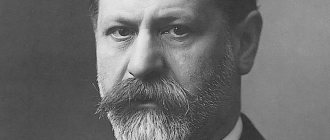Most areas of psychotherapy work with mental disorders, affecting the psyche. Various addictions, sleep or eating disorders, schizophrenia, behavioral deviations are their area of activity. And only a few are able to have a therapeutic effect not only on the soul, but also on the body. Asthenia, vegetative-vascular dystonia, obesity, diseases of the musculoskeletal system and respiratory organs, speech and hearing defects - professionally organized dance movement therapy (TDT) can cope with all this set.
What it is
Dance therapy is a branch of psychotherapy that focuses on creative self-expression through dance and movement, which promotes the integration of cognitive, emotional, social and physical aspects of a person's life. A new method of treating soul and body, which evokes only positive emotions in patients and allows them to get rid of many problems.
Even in primitive society, dancing had socio-psychological importance, performing several functions at once:
- ritual (established a connection with higher powers);
- communicative (transferred knowledge, facilitated communication between different groups);
- identification (reflected belonging to a certain tribe);
- expressive (allowed self-expression);
- recreational (relieves emotional and physical stress).
At the beginning of the 20th century, many areas of psychotherapy began to consider dance as a possible additional method to the main course of treatment for various disorders and pathologies:
- psychoanalysis - as a technique for expanding consciousness;
- individual psychology - as the education of an innate “social feeling”;
- analytical (complex) psychology - as working with the unconscious;
- body-oriented psychotherapy - as a method of treating neuroses through bodily contacts.
Dance movement therapy became a separate area only in 1946. American dancer Marion Chase, noticing how choreography lessons had a beneficial effect on students, suggested conducting similar classes in the hospital. She worked with psychotic, mute patients. She taught them to interact in a group, express feelings openly, and communicate. The success was obvious.
1966 is the year the American Dance Psychotherapy Association was born.
Today, TDT is an independent, full-fledged area with its own set of methods and techniques that allow achieving results in the treatment of patients. It is used not only for adults who find themselves in a difficult life situation and are in a state of stress or depression. There are programs for pregnant women, children, teenagers, and the elderly. There are family forms of work. Prescribed as an auxiliary tool for various diseases and disorders.
Dance and movement therapy in working with families with the topic of establishing personal boundaries
Let me give you an example from practice when the words “stopped working”: a mother and two teenage daughters went to family therapy (the father left the family when the children were 4 and 5 years old). The main theme of their relationship was a misunderstanding of each other: conflicts broke out on any occasion, they shouted and threatened each other, slammed doors and took turns running away from home. We devoted a large number of therapeutic sessions to articulating each other’s positions, establishing rules and mutually acceptable agreements. Time passed, and they returned after the next cycle of therapy with even greater tension in the relationship due to the violation of the agreements that they had established during our meetings. The topic of border violations became the main one. One day they arrived in such a state that they could not talk to each other. Having identified the topic of boundaries, I invited them to nonverbally explore boundaries and proxemics (i.e., the relationships of distance and proximity in relation to each other). It was necessary to feel the distance that exists between them at the moment, and the one that they would like to have. It was a kind of couples dance, in which a very confident movement showed where the other should stop: “Stop!” Imagine their surprise when they saw that the distance that really exists was too close for them and very close, since any movement of one physically affected the personal space of the other. Therefore, any spark flared up into a flame, any word was perceived as a threat, an attack or an invasion of personal space. The next part of the work surprised them no less - it turned out that the distance at which they felt comfortable was very large. It was a discovery for the daughters that their mother stopped each of them at a fairly large distance. It seemed to them that their mother did not need her own space at all, that she lived exclusively in their interests. And only as a result of such motor work did they acquire the ability to speak and hear each other. This session was pivotal for their family. After her, my mother stopped taking her children to different psychologists with the constant request: “Do something with my daughters so that they obey and respect me.” She decided on her own long-term therapy. This example clearly shows how working with movement can effectively remove resistance and help you see the real situation. In addition, such motor research allows you to experience and change it on the physical level, to gain a new bodily experience of comfortable coexistence in the family.
The essence
The main goal of dance and movement therapy is to reveal not only a person’s creative potential, but also inner thoughts, motivations, and fears. Relieves stiffness, complexes, phobias, self-doubt, low self-esteem and many other, more serious disorders. To implement all these plans, a number of tasks are sequentially performed at different stages of working with the patient:
- realize the abilities and capabilities of your own body;
- improve social skills;
- feel, express your own “I” in the language of dance;
- learn to establish connections between movements, feelings and thoughts.
There are several basic principles on which dance-movement psychotherapy is based.
The principle of interconnection
You cannot heal the body if the soul is sick, and vice versa. TDT is aimed at their simultaneous recovery.
Principle of socialization
With the help of dance you can establish communication: with yourself, the world around you and other people.
Principle of integrity
TDT works immediately with all components of the “thoughts-feelings-behavior” triad famous in psychotherapy.
Development principle
The body is a living, constantly changing and improving organism, and not a static object.
The principle of creativity and self-realization
A person's internal resources should be used as a motivator and source of vitality.
During the classes, patients become more relaxed. By using non-verbal methods of self-expression, they extract from the subconscious problems that they sometimes cannot communicate about due to some circumstances, and sometimes they themselves are not aware of their existence. This helps psychotherapists make a correct diagnosis and select optimal treatment methods.
Institute of Practical Psychology and Psychoanalysis
E.V. Burenkova Candidate of Psychology, Associate Professor of the Department of General Psychology, PSPU named after. V.G. Belinsky, teacher of the Department of TDT IPPiP
Dance-movement psychotherapy has become more and more popular in recent years in our country and in neighboring countries. This is evidenced by the number of domestic publications in which the words dance therapy, dance movement therapy are found, and the number of people promoting the therapeutic power of dance and, accordingly, leading various kinds of groups using TDT methods, and the frequent mention of TDT in newspapers and magazines , television and radio. The popularization of the TDT direction and method, on the one hand, has a fairly large benefit and contribution to the development of the domestic direction, on the other hand, in mass and flow it is easiest to lose the methodological basis and support, which constitutes the therapeutic power of the method. And this is happening now, when everyone that is connected with dance is trying to be called dance-movement therapy.
I will not dwell on the specifics of the application and role of dance and movement in dance movement therapy and dance pedagogy, I.V. Biryukova speaks in detail in the article “The Role of Professional Training and the Formation of Professional Identity of a Dance and Movement Therapist” (2009). I will consider only general patterns found in the research space of TDT. Moreover, this article is only an attempt to understand the experimental space of TDT in relation to psychological science.
PSYCHOTHERAPY – SCIENCE or ART?
“Psychotherapy must always remain the persistent desire of two people to restore the integrity of a human being through the relationship that arises between them” (R.D. Lang, 2005, p. 58). The structure of these relationships is itself therapy because it allows one to explore one's own personality in relationship with the Other or Others. K. Lewin described the process of experiencing and experience as a cyclical model of three components: research, planning and action, where each component of the model is part of a continuous process of learning about the world.
Psychotherapy through the prism of clinical conversation - the main method - is often considered as a process of professional relationships in the “person - personality” dyad. In this regard, each moment of psychotherapeutic interaction is unique, and, accordingly, brings psychotherapy closer to art: the art of listening, conducting a conversation, the skill of the therapist’s presence in the moment “here-and-now”, the art of creating a space of “healing” contact. However, in order for the effect of therapy to be “predictable,” specialists are required not only to have listening skills, but also the skills of planning and analyzing research in order to systematize and present the empirical results obtained. Berkeley (1992) suggests that novice practitioners should, at a minimum, be able to formulate appropriate research questions, use clear definitions of terms, understand the sources of ambiguity and uncertainty and how they can be controlled, and be aware of the existence of problems associated with procedures. observations and measurements, understand the value of data presented in the literature, and have an understanding of the research process itself and be motivated to study it further throughout one’s professional life [2, p. 53].
Indeed, the process of psychotherapy and the research process of scientific psychology are in many ways similar to each other.
Thus, the normative process of scientific research is structured as follows:
1. Proposing a hypothesis (hypotheses). 2. Study planning. 3. Conducting research. 4. Data interpretation. 5. Refutation or non-refutation of the hypothesis (hypotheses). 6. In case of refutation of the old one, the formulation of a new hypothesis (hypotheses) [1, p. 13].
This process consists of a series of successive stages:
1. highlighting the problem; 2. analysis of previous scientific works in this direction; 3. formulating a hypothesis, forming a research plan; 4. hypothesis testing (conducting research); 5. analysis of the results obtained; 6. conclusions and generalizations of results (application to existing reality)
Further, if we transfer the above-described research scheme to the process of psychotherapeutic interaction, we will see some similarities in the logic of research planning, i.e.:
1. awareness of the problem and the need to solve it; 2. systematic study of the context and prerequisites for the emergence of this problem; collecting data about what is known about the problem and attempts to solve it; 3. functional definition of the problem with a view to its subsequent solution; the conclusion drawn from studying examples of solving this class of problems; forecasting results and choosing actions based on the probability of success; 4. testing hypotheses in terms of action; 5. evaluation of results; 6. conclusions and generalizations.
Thus, the scientific basis of the psychotherapeutic process consists of successive stages of psychological research, with the necessary identification of components that structure the study of the client’s psychological reality. For example, when mastering the research method in psychotherapeutic counseling, from the point of view of J. Kottler and R. Brown, the consultant needs to master the following knowledge and skills:
1. terminology and language through which communication with other specialists is carried out; 2. knowledge of classic counseling research and its impact on clinical work. This is necessary in order to independently analyze the various methodological approaches given in the literature, as well as for one’s own awareness of professional identity; 3. knowledge of the means of conducting systemic research on issues of immediate interest.
They suggest that by mastering the language and strategies of methodologically sound approaches to solving given problems, the specialist learns to use helping skills in a more conscious and consistent manner.
Psychotherapy – science or art? In order to make a choice, it is necessary to understand what distinguishes art from science or, conversely, science from art. The differences between these areas of human activity lie in the continuum of “uniqueness - repeatability”. In this sense, psychotherapy is more of a science, because The repeatability of the effect is determined by a clear methodological basis and technology for using the method. However, in order for the “magic” of healing to occur, the uniqueness of the therapeutic alliance is necessary, which is possible only with a kind of special subjectively perceived contact between the therapist and the client.
Thus, in the process of psychotherapy, a nonlinear interaction occurs between uniqueness and repetition, each time being mutually determined by the peculiarity of communication between the therapist and the client.
In dance-movement psychotherapy, where communication, transcendence of polarities and creativity are one of the main principles, the boundary between seeing SDT as part of scientific knowledge and SDT as the sacrament and magic of art is even more blurred than, for example, in cognitive or behavioral psychotherapy. And, in my opinion, this is where the main confusion between TD art and TDT lies, which allows us to call dance-movement psychotherapy the use of movements and dance in the correctional and developmental work of a psychologist and teacher.
METHODOLOGY OF PSYCHOLOGICAL SCIENCE and TDT
Any scientific discipline can claim the status of an independent science if it has four main features:
1. reliance on a clear ideological basis (methodology); 2. having your own research object; 3. having your own subject of research; 4. availability of own research methods [4, p.8].
The methodology of psychology is a branch of psychology as a science, lying at its intersection with philosophy, the subject of which is the compliance of the language of psychological science, the principles of psychology, its methods and structure (the tree of psychological science) with the requirements of dialectical materialism (K.K. Platonov, 1981). Methodology is also defined as a system of principles and methods of organizing and constructing the theory and practice of individual psychological sciences, their branches and all of them as a whole, as well as the doctrine of this system. In general, the most laconic definition was given by P. Kopnin and A. Spirkin (1964) - methodology is the application of worldview principles to the process of cognition.
Thus, methodology in psychological science as a whole performs two functions: 1. serves as a theoretical and ideological (ideological) basis for scientific knowledge and acts as a doctrine of the method of knowledge; 2. in terms of the degree of generality, methodology can be presented as a general, general scientific and particular concept. In this regard, methodology is a theoretical, ideological and methodological basis: at the level of the universal for the entire system of sciences, at the level of the general - for a significant part of this system, but not for all sciences (for the totality of sciences that have a common object of study), at the level of the particular – for any specific science [4, pp. 36-37].
In relation to dance-movement psychotherapy, the main theoretical basis is psychodynamic theories of development (S. Freud, C.G. Jung, etc.), the ideological basis is the humanistic approach of transformative interaction (C. Rogers’ triad). The main methods of cognition in TDT are consistent with the basic methods of experimental psychology - methods of introspection (self-observation and self-assessment of one’s internal states)*; method of exterospection (observation of the behavior, state and reactions of the subject)**; understanding (hermeneutics – direct perception, “grasping” the mental states of another person, presupposes the presence of two qualities in a psychologist: empathy and intuition)***.
The approaches described by M. S. Whitehouse, T. Shoup, M. Chace, J. Khodorov, R. Laban, I. Barteneff and other theorists and practitioners allow today's followers of TDT to get acquainted with the basic school of teaching about TDT, its principles, structures and methods.
In order to further understand the object, subject and research methods in dance movement therapy, we will consider the most common types of definitions of TDT. Let us give two examples of definition.
1. Dance and movement therapy (DMT)
is a type of psychotherapy that uses movement to develop a person's social, cognitive, emotional and physical life. Dance therapy is based on the premise that the body and mind are interconnected. Dance therapists work with people with a variety of emotional problems, intellectual decline and serious illnesses. Dance therapists try to help people develop communication skills, positive self-image, and emotional stability [9].
2. TDT
is a method that uses expressive movement and dance as a tool to engage the individual in a process of personal integration and growth [10].
So, on the one hand, TDT is defined as a type of psychotherapy, and on the other hand, as a specific method of personal integration and human development. In this regard, the existing dichotomy in research works becomes clear: - and at one pole we find works that are of an empirical nature exploring the possibilities of the TDT methods themselves as a tool for studying and changing human mental activity (P. Lewis, A. Avstreich, 2005, E. Dosamantes - Alperson, 2005, P. Pallaro, 2007, 2008, J. Khodorov, 2008, etc.), - on the other - research works where TDT acts as a method by which the range of possibilities is studied in its application to various categories clients and patients (these are personal growth groups (T.A. Shkurko, 2002; A.E. Girshon, N.I. Veremeenko, 2006; N.V. Kanevskaya, 2006, L.L. Razdrokina, 2007, etc. ), and the actual therapeutic and correctional groups (I.V. Biryukova, 2005; M.A. Bebik, 2005; N.A. Oganesyan, 2002, A.E. Shkeneva, 2008)).
PRINCIPLES OF PSYCHOLOGICAL SCIENCE AND PRINCIPLES OF TDT
Each direction of science determines the basic principles of the vision of mental reality and its laws, the so-called. angle of refraction to describe, interpret and predict the object of study. And in psychological science, general scientific principles of cognition and specific psychological principles are distinguished.
General scientific ones include:
Anthropic principle
as the fundamental knowability of the world and its possible changeability under the influence of the knowing subject;
The principle of determination
as the principle of the universal conditioning of something by something.
The principle of complementarity
, which states the complexity of the organization of any objects of reality and, as a consequence, the need for a multifaceted description of these objects.
The principle of invariance,
which emphasizes the unity of tendencies of stability and variability in the organization of the world, and requires researchers to identify constant characteristics of Nature, indicating the fundamental commonality of all fragments of reality at all levels of its organization.
The principle of methodical atheism
, which prohibits reference to God as a causal factor.
The principle of objectivity
.
This principle states the existence of an objective reality, which is partially and generally fundamentally knowable. The principle of relativity
indicates the dependence of any properties of objects of reality on their movement: any object of reality is always in relation to other objects.
The principle of self-organization
, which predetermines the possibility of progressive development of the world.
This principle is associated with the principles of integrity and consistency. The principle of systematicity
is a methodological direction in the study of reality, considering any fragment of it as a system.
The principle of correspondence
lies in continuity when one theory is replaced by another.
The principle of integrity
states that “the integrity of an object is expressed in the unity of all its parts and functions, in their consistency. The main forms of existence of any whole as an object of the real world are space and time. The main way of existence of any whole is movement” [4, p. 119].
Specific psychological principles include:
The principle of determinism
as the basic principle of scientific knowledge of mental phenomena.
The principle of the unity of consciousness and activity
includes the principle of the unity of consciousness and personality, and the unity of personality and activity.
The principle of the personal approach
determines the integrity of a person from the point of view of his mental organization and his interaction with the outside world.
The principle of development
, which “concretizes in psychology the general law of dialectics, according to which development is a universal property of matter” [4, p. 128].
The principle of the systems approach
in psychology is the study of the psyche and any of its manifestations as systems.
A comparison of the fundamental principles of SDT with the above-mentioned principles of psychological science reveals their consistency (Table 1). And, therefore, the theoretical concepts of experimental psychology are also applicable in dance-movement psychotherapy.
Coordination of general scientific and specific principles of psychological science and the principles of dance-movement psychotherapy
Table 1.
| Principles of TDT [11] | Principles of Psychological Science |
| Principle 1. The body and psyche are inseparably interconnected and mutually influence each other. The axiom of TDT is “the body is the mirror of the soul, and movement is the expression of the human self.” | Principle of integrity Principle of relativity Principle of complementarity |
| Principle 2. Dance is a communication that occurs on three levels: with oneself, with other people, and with the world. | The principle of relativity The principle of personal approach |
| Principle 3. Integrity is understood as a triad of “thoughts - feelings - behavior”, and changes in one aspect entail changes in the other two. | The principle of a systematic approach |
| Principle 4. The body is processual. The essence of this principle reflects one of the principles of Tao - the ability to see statics in movement and movement in statics. | Invariance principle |
| Principle 5. Creativity is an inexhaustible source of human vitality and creative energy. | Development principle |
Analyzing the principles of TDT formulated above (Table 1), we will highlight three main areas of work of a dance-movement psychotherapist: the body (bodily processes) and its movements, interpersonal relationships, self-awareness. Thus, dance-movement psychotherapy, taking as a basis the vital force of creativity, on the one hand, by differentiating, integrates a person’s thoughts, feelings and behavior into the whole in the study and awareness of the bodily process, on the other hand, uses this knowledge in the study and formation of human communications with society.
Accordingly, the objectives of dance-movement psychotherapy are: - the formation of a safe space, a therapeutic relationship that uses the vitality of creative energy; - achieving inner integrity and self-awareness by exploring the body's reactions and actions and integrating thought, feeling and movement; — restoration of dialogue with oneself through expression and acceptance of relationships with one’s feelings; - development of self-esteem, self-acceptance and deep trust in oneself and in the life process, development of constant contact with one’s life resources.
And the main task of dance-movement psychotherapy will be to gain feeling and awareness of one’s own “I” [12].
The objectives of the TDT study will be:
1. Identification and description of some phenomenological mental units, studied and defined through movement (for example, studies of affects by J. Chodorov [8]); 2. Explanations of mental facts by revealing psychological patterns through the prism of the basic principles of TDT (for example, the research of P. Lewis and A. Avstreich, described in the article “object relations and the psychology of the self in psychoanalytic dance-movement therapy” [5, p. 100]); 3. Elucidation of the mechanisms of manifestation of psychological patterns through the methods of SDT (for example, J. Bell in the article “Movement Family Therapy: Studying, Evaluating and Changing the Family Dance” refers to methods for determining the dysfunctional and changing behavior of family members through the study of group movement [7]).
OBJECT AND SUBJECT OF RESEARCH IN TDT
The next step is to determine the object and subject of research in dance-movement psychotherapy in particular.
An object
research of any science is a certain fragment of reality, which is the focus of the research activities of this science (V.V. Nikandrov, 2008, p.9).
And, accordingly, the object of psychology research in general is what is recorded during the study: characteristics, properties, qualities, changes in the psyche of humans and/or animals. The subject of
psychological research is any part (side) of the manifestation of an object. The subject indicates the aspect of studying a given object (from a certain point of view), determines the specifics of science, in other words, “what needs to be identified, cognized, and this is, first of all, the essence of mental phenomena, their patterns, trends, essential connections, relationships, features of the processes and the course of processes and mechanisms of functioning of the psyche” [3, p. 78]. As scientific methodologists say, “the object of cognition is the form of the given objective reality to the subject of cognition, and the subject of scientific knowledge is the form of the givenness of the cognizable object to the cognizing subject” (N.N. Semenova, 1976, p. 64).
Thus, as an object of TDT
The research will be bodily sensations, interpersonal relationships, self-awareness,
while
the subject of TDT
research will be all sorts of features of individual characteristics and their relationships within the continuum “cognitive sphere - emotional sphere - movement”, as well as the continuum “internal experiences - interpersonal interactions” of the subject in various spheres his life activity.
CONCLUSIONS
In conclusion, I would like to note that in order for a TD study to take place, it is necessary that, along with the actual TDT methods, generally accepted methods in experimental psychology coexist. If we talk about formalized methods in TDT, these are only methods for observing and analyzing motion developed by R. Laban, I. Barteneff and H. Payne. In other cases, specialists in the field of TDT use specific therapeutic methods (techniques) that contribute to the transformation of certain psychological characteristics of the individual and his states - “mirror”, “change of movement to the opposite”, “intensification of movement”, etc. In this case, to ascertain changes, they are used other diagnostic techniques borrowed from classical psychology.
Dance movement therapy often talks about support and weight. So, in order for dance-movement psychotherapy to survive on the domestic soil of psychological science, it is important for us, its today’s adherents, to resolve the following methodological problems, allowing us to “feel the support and our own professional weight in psychological science.” This is: - analysis of principles, theories, approaches in TDT in accordance with domestic principles of psychological science; — elaboration of the conceptual apparatus of the research process in TDT and the corresponding terminology, language and research schemes; — identification and continuation of the study of the areas of applicability of TDT methods and technologies; — the actual development and testing of individual methods and methodological techniques (from particular to general) in TDT.
The highlighted points of the work represent, in my opinion, a separate project to comprehend and create a certain concept based on the fundamental world scientific and practical school of TDT. SDT is inherently an interdisciplinary field of therapy, and, accordingly, the field of theoretical empirical research will also always be in the “space of touch” either with the deep world of experiences or with the external nature of interpersonal communications. And without the participation of everyone who practices TDT, the creation of a methodological and actual research base is impossible.
LITERATURE
1. Druzhinin V. N. Experimental psychology. – St. Petersburg: Peter, 2001. – 320 p. 2. Kottler J., Brown R. Psychotherapeutic counseling. – St. Petersburg: Peter, 2001. – 464 p. – (Series “Golden Fund of Psychotherapy”) 3. Konstantinov V.V. Experimental psychology. Course for a practical psychologist. – St. Petersburg: Peter, 2006. – 272 p. 4. Nikandrov V.V. Methodological foundations of psychology. Tutorial. – St. Petersburg: Rech, 2008. – 235 p. 5. Scientific and practical journal of a practical psychologist. – Moscow, 2005. – No. 3. – 200 p. 6. Laing R.D. Phenomenology of experience; Bird of Paradise; About the important / Translation from English. – Lvov: Initiative, 2005. – 352 p. – (Series “Citadele”) 7. Bell J. “Movement family therapy: studying, assessing and changing family dance” - methodological handout for specialization in TDT IPPiP - Moscow, 2007. [Electronic resource]. 8. Khodorov J. Dance therapy and depth psychology: Driving imagination / Transl. from English - M.: "Cogito-Center", 2009. - 211 p. 9. Bouton B. Dance therapy (American version) 10. ATDT Newsletter. Moscow. 2000. No. 4. P.11. 11. Biryukova I.V. Dance and movement therapy: the body as a mirror of the soul // ATDT Newsletter. Moscow. 2000. No. 4. P.6-7. 12. Bebik M.A. History and basic principles of dance movement therapy
NOTES:
* This method received methodological justification in the philosophy of R. Descartes. With the separation of psychology into an independent science, this method studies sensations, perceptions and emotions in laboratories. Variations of this method include questionnaires of subjective states, self-esteem scales, personality questionnaires, etc.
** The philosophical basis for the method is the views of representatives of positivism (O. Comte, G. Spencer, etc.) and pragmatism (W. James, D. Dewey), who believed that only that knowledge is true that relies on empirical facts that can be checked. In psychology, this is the study of observable and measurable mental phenomena of behavior, reactions to stimuli, etc.
*** The theoretical justification is connected with the philosophy of life and understanding psychology of V. Dilthey. Widely used in humanistic psychotherapy. Variants of this method are graphological and physiognomic methods, psychoanalytic interpretation, projective methods (in the interpretation phase), analysis of the products of human activity, and the biographical method. Modeling as the construction of a “model” of the psyche of another in one’s subjective representation.
Indications and contraindications
Indications:
- asthenic syndrome;
- vegetative-vascular dystonia;
- impaired metabolism;
- overweight, obesity, psychogenic overeating;
- diseases of the musculoskeletal and respiratory systems at the initial stage;
- apathy, neuroses, increased conflict, negativism;
- emotional, behavioral disorders;
- phobias, complexes, low self-esteem;
- stress, depression;
- the presence of a muscular shell;
- autism;
- Disabilities, mental retardation, hearing and speech disorders in children.
It is especially often used for neuroses and depressive states, as it contributes to the overall psychological well-being of the individual, increases self-acceptance, autonomy, relieves tension, clarifies life values, and sets up a positive change in interpersonal relationships.
Contraindications:
- cerebrovascular accidents;
- productive psychopathological symptoms: delusions, hallucinations, catatonic disorders;
- suicidal tendencies;
- gross behavioral violations;
- diseases accompanied by acquired dementia: Alzheimer's, Hallervorden-Spatz, Parkinson's, Pick's, anoxia, Huntington's chorea, spinocerebellar ataxia;
- angina pectoris, cardiosclerosis, hypertension;
- shortness of breath, bronchial asthma;
- serious diseases and injuries of the spine.
Kinds
Clinical TDT
It is used not only to eliminate mental problems, but also to treat physiological diseases. Acts as an auxiliary method of therapy. Most often prescribed for children with hearing or speech impairment, with disabilities and mental retardation, for adults - when diagnosing an astheno-neurotic condition, vegetative-vascular dystonia, diseases of the musculoskeletal system and respiratory organs.
Psychotherapeutic TDT
Solves specific problems, eliminating neuroses, increased conflict, negativism, stressful conditions, obsessive thoughts, phobias and addictions. Involves various forms of work: group, individual, family. Often uses psychoanalytic methods. Requires a fairly long period to achieve a sustainable result.
Psychological TDT
Absolutely anyone who wants to loosen up, throw out negative energy, and improve their social skills can attend these classes. It is not necessary to suffer from any specific problems. It is usually carried out in groups. It is used by educational psychologists as a method of psychocorrection for minor personality and behavioral deviations in children and adolescents.
Each type can use techniques and methods borrowed from other movements and directions:
- psychoanalysis;
- psychodrama;
- existential-humanistic psychotherapy;
- transpersonal therapy.
Dance movement therapy also has its own trends:
- integrative (A. Girshon);
- “5 rhythms” - combination with meditative techniques (G. Roth);
- contact improvisation (S. Paxton).
Most often it is used in close collaboration with other areas of psychology and psychotherapy.
Stages of treatment
1. Awareness
The main task is that the patient, through dance, must realize who he really is, what he wants, his desires and values, feelings, needs, fears. In parallel, the same work is done with the body: tracking breathing, honing movements, monitoring pulse and blood pressure.
2. Expression
After awareness, the patient learns to express his emotions, feelings and desires in dance. He can express with his body what he cannot express in words. This relieves psychological and muscle tension.
3. Authenticity
With the help of spontaneous improvisations, the psychotherapist is able to penetrate into the deepest and hidden corners of the patient’s subconscious. Sometimes this stage is compared in effectiveness to hypnosis.
WHO SEEKS A DANCE THERAPIST?
These are primarily people (sometimes called kinesthetics), for whom movement is a way of processing information. To fully understand something, they need to feel it in the body and find expression for it in movement. For them, movement is a way of self-expression, self-knowledge and development.
These can also be people of a different type (you can distinguish the auditory or visual type), who at a certain stage of their lives began to understand that in order to solve their problem, they need to turn to their body, learn to understand its language and enter into communication with it. dialogue.
What they can all have in common is that at a certain moment these people may feel that they are not whole, that they have lost contact with themselves or would like to change the quality of this contact. Psychologically, loss of contact with oneself is identical to loss of contact with the body.
Methods, techniques, techniques
The type of dance movement therapy determines the set of techniques with which the specialist will help the patient get rid of problems. The most common and effective techniques:
- emotional response;
- role-playing games;
- musical movement is an educational method that promotes personal development, designed for healthy people, but successfully used in working with problem children;
- free dance;
- breathing exercises;
- kinesthetic empathy;
- pair improvisation;
- structured dance;
- joint selection of music.
The success of treatment is determined by correctly selected methods. That’s why a professional approach to solving the problem is so important here. If you only need to get rid of negative energy, you can simply turn on music at home and, without hesitation, throw out all the bad things. This will also fit within the framework of this direction. More serious disorders should be dealt with by trained specialists.
Want to work out with a professional? Then you should go to the “Live Dancing” Center for Integral Dance. Founder: Alexander Girshon. Candidate of Psychological Sciences, choreographer, professional dance and movement therapist. Presenter and author of numerous trainings and master classes. He has written many works on psychology and spiritual practices: “Stories Told by the Body”, “The Little Book of the Shadow”, “Integrative Dance and Movement Therapy”.
WHAT CAUSES LOSS OF CONTACT WITH THE BODY?
Stromstad answers this question as follows:
- Any kind of physical, emotional and/or psychological violence.
- Early childhood illnesses, difficult childbirth, birth defects, body injuries received at a very early stage of life.
- Other injuries to the body, including accidents and surgery.
- Poor early object relations, where the “mirroring” by parents, so necessary for the child to develop a healthy sense of self, was inadequate.
— Inadequate or violated boundaries in interpersonal relationships of family members.
- Feelings of shame and criticism that parents project onto the child (when adults are at odds with their bodies). These feelings may also be caused by a rejecting or intruding parent.
— Early abandonment or neglect of the child. The child's feeling that his body or the quality of his life does not correspond to the cultural ideal or family pattern-style.
- Religious devaluation of sensuality, needs and the role of the body as the most important basis of our perception, point of view and access to the world of sensations.
— Survival in disasters such as the Holocaust, natural disasters, wars. (see T.Stromsted “Re-inhabiting the female body” / Somatics(r). 1994-1995. V.10. N1. P.18-27.)
So, TDT is a huge field. There are no age or nosology restrictions for TDT. The only limitation is the limitations of the dance therapists themselves (depending on their specialization).
In Russia, TDT initially developed as a type of personal growth group for adults. Now the range of its application has expanded significantly. There is group and individual work with children and adults, with the help of which you can solve your personal problems related to relationships with other people, anxieties and fears, crisis life situations, loss of meaning in life, and misunderstanding of yourself. There is also family TDT, where family problems can be solved; There are children's groups for preschoolers and schoolchildren that develop the child's creative abilities and communication skills, helping them prepare and adapt to school. There are unique programs for children (child-parent groups) that correct the disharmonious development of the child (such as mental retardation, minimal brain dysfunction, etc.); We work in groups and individually with people suffering from eating disorders (anorexia, bulimia, compulsive overeating - classification according to DSM IV-R); with psychogenically caused bodily symptoms and other psychosomatic disorders. TDT is used as a way to prepare couples for parenthood before childbirth, as well as for postpartum support - special groups for babies from 0 to 3 years old and their mothers.
Work with people suffering from post-traumatic disorders, disabled children, and refugees is beginning to develop.
TDT in Russia is still a very new specialization. The Association of Dance Therapy (ADT) is gradually taking steps to develop the profession with the support of the American Dance Therapy Association (ADTA), the European Working Group on the Professional Development of DDT (a board of directors of 12 training programs in DDT in Europe) and the International Association for Creative Expression Therapies (IEATA). ). Since 1995, there has been a 4-year training program in TDT in Moscow. In 1999, a TDT specialization was opened at the Institute of Practical Psychology and Psychoanalysis.
How trainings, sessions, classes are conducted
In addition to specific principles, generally accepted, basic principles are also used for conducting sessions:
- voluntary participation;
- the “here and now” principle (the only thing that matters is what experiences the patient is experiencing at the moment);
- confidentiality;
- open expression of emotions and feelings (a trusting relationship not only between the patient and the therapist, but also between group members);
- responsibility (complete all tasks exactly);
- activity.
Most often, dance movement therapy uses a group form of classes. Usually they are lined up according to a certain pattern.
Warming up
Time: 3 minutes.
Goal: prepare the body for work, remove muscle tension.
Exercise - “Dance in parts.” Participants stand in a circle. Rhythmic music is turned on. The specialist names the parts of the body that need to be involved: head, arms, shoulders, hips, stomach, body. Next comes a discussion about who found what was easy and what was difficult. Where difficulties arise, most likely, there is a muscular shell.
Dance-motor expression
Time: 30-45 minutes.
Goals:
- awareness of one's own body;
- development of his capabilities and abilities;
- expression of feelings and emotions;
- honing social skills when working in a group.
"I'll lead you"
Participants stand in a column. The music turns on. The one who is in charge begins to move, showing various steps. The others repeat his movements. After 30 seconds, when the specialist claps, the leader goes to the end of the column. The one who was first takes on his responsibilities. Everyone must play both roles. During the discussion, everyone expresses in which position (follower or leader) they felt more comfortable.
"Fauna"
Each participant chooses any animal or bird and begins to imitate it to the music, without telling others who exactly he is copying. Before performing the exercise, the specialist sets three tasks:
- Try to make the animal recognizable to others, that is, portray it as realistically as possible.
- Find out as many other animals and birds as possible.
- Make contact with others while dancing.
While performing the exercise, the dance therapist makes observations and records the results. Why did the participant choose this particular animal? Psychologically, the difference between a wolf and a rabbit, for example, is significant. How closely does he interact with others? You can immediately distinguish between socially active and outcasts. How exactly do these contacts take place? Some express aggression through dance, others express friendliness and gentleness.
"Mirroring"
Participants are randomly divided into pairs and stand opposite each other. One shows the movements, the second performs them, mirroring them. The main thing is not to touch your partner and look eye to eye. After a minute the roles change. Within a few minutes you can create new tandems. As a result, what was liked and what was not is discussed.
"Round dance"
Participants join hands and stand in a circle. Quite rhythmic music is turned on, to which you need to move spontaneously, expressing your own “I”, bringing something individual to the collective dance. The only rule is not to open your hands. Here it is important for a specialist to see socialization skills. Someone is too passionate only about himself, not paying attention to the fact that it causes inconvenience to others (this indicates the presence of disorders). Others are shy. Still others mechanically copy the movements of their neighbor.
Hitch
Time: 5 minutes.
Goals:
- restore breathing;
- relieve tension and emotional arousal;
- consolidate the results.
Meditation. Slow, calm music comes on. On the projector screen is an illustration of a beautiful sunrise. Participants sit down randomly (preferably directly on the floor), taking a comfortable position. The dance and movement therapist pronounces affirmations about how good and calm everyone is in their souls. Audio recording may be used. At the same time, patients can move to the beat of the melody, close their eyes, even lie down - there are no prohibitions.
Analysis
This concludes the main part of the session. But not for a psychotherapist who analyzes the behavior of each participant during a lesson from the following positions:
- how he uses space and time;
- in what rhythm does he feel more comfortable?
- how he interacts with other participants;
- whether you were able to express yourself while doing the exercises;
- what is more in the movements - chaos, spontaneity or submission to some rules;
- how precise and targeted are the movements;
- what parts of the body fall out of the dance (most likely, they are hostage to the muscular shell), etc.
After a comprehensive analysis of the behavior of each participant, the therapist can reorganize the groups and schedule individual sessions.
MAIN SOURCES OF TDT
It is impossible to understand the essence of SDT without referring to the main sources that feed it as a separate school of psychotherapy. In this regard, four historical aspects should be highlighted:
1. The first is the development of science, and primarily of psychoanalytic schools associated with S. Freud’s of mental reality and consideration of the psyche as the dynamics of conscious and unconscious processes in human ontogenesis. Z. Freud gave impetus to the development of depth psychology, where three main schools can be distinguished: - Psychoanalysis of Z. Freud; — Individual psychology by A. Adler; — Analytical psychology of C. G. Jung.
By the 40-50s, psychoanalytic trends had become quite strong in psychotherapy as an alternative to traditional hypnosis. Many other schools arose that either refuted or developed these basic theories and practices - thus making invaluable contributions to the general understanding of psychological laws.
TDT was born, already relying on traditions and new psychotherapeutic schools and directions. Dance therapists (depending on their inclinations and general psychotherapeutic training and experience) could use the universal language of movement to relate and contrast their practice with any psychological concepts. TDT is a kind of meta-level that can draw parallels and combine knowledge, experience and concepts of various psychotherapeutic directions. At the same time, TDT develops its theory based on the idea of psychosomatic unity.
2. The beginning of the century became the era of modernity in art: new forms, new principles were tried. The dance also went beyond the usual. Isadora Duncan is one of the most famous dance innovators in Russia. She was unique as a performer and expressed exactly those ideas that were the banner of modernist art. She did not create her own school. The foundation of new dance forms and dance pedagogy is associated with other names. And first of all, it is worth highlighting the Austrian dancer, choreographer and philosopher Rudolf von Laban. He was an outstanding teacher and theorist of movement and dance. It was R. Laban who put into practice the principle of the value of individual expression in dance. Having abandoned the usual ballet training, he developed his own approach to teaching and staging movement techniques, which made it possible to maximize the individual expression of each dancer. In addition, he created a system for recording and describing any human movement (like notes for recording music), which is currently the theoretical basis and method of analysis and diagnosis in TDT. His teachings in the 60-70s were developed by Irmgard Bartenieff, who developed a special system of exercises (“Bartenieff Fundamentals”) that harmonizes movement and teaches the correct and economical use of the body in movement. Currently, Laban analysis and Bartenieff Basics are an integral part of the TDT methodology, as well as its separate direction.
German dancer and choreographer Mary Wigman became the founder of dance expressionism. She was most interested in human affects. Emotional experience gave birth to bodily form and determined the quality of movement. In ballet, on the contrary, a set of certain forms serves to express different contents. Mary Wigman brought improvisation to dance pedagogy and choreography.
Dance improvisation is a way of spontaneous movement. When a person moves spontaneously, he expresses himself very accurately and honestly: in spontaneous movement, unconscious aspects of the personality can materialize. The unconscious can become visible, take shape, thus a person is able to reconnect with lost parts of himself, his psychological resources. And if you realize this, then the opportunity opens up for self-knowledge and gaining greater personal integrity and integration - and this is the main part and goal of the psychotherapeutic process. Those. it turned out that improvisation itself confronted dancers and teachers with the healing power of dance.
It is no coincidence that all the first dance therapists were students of R. Laban and M. Wigman or their followers.
For example, Marian Chace had her own studio. And gradually her interest shifted more and more from performing arts to the process of exploring individuality in dance improvisation. She saw her students open up and change as individuals, becoming more whole, more themselves. There is a legend that among her students there were people who were simultaneously in psychotherapy. And psychotherapists paid attention to the improvement in the condition of their patients, which was associated with classes with M. Chase. Gradually, some psychotherapists began to refer their patients to dance improvisation classes at her studio. And in 1946, Marian Chase was officially invited to work at the psychiatric hospital. St. Elizabeth in Washington, DC, where her method was born in close collaboration with psychiatrists. Probably, this date can be considered the birthday of TDT. It should be mentioned that this clinic is one of the most advanced psychiatric hospitals in the United States. She is known for her humanistic approach to psychiatry and remains an innovator in the use of creative expression therapies in psychiatric treatment to this day. Other pioneers of TDT include Trudy Shoop, Mary Whitehouse, and Lilian Espenak.
3. It is worth mentioning separately about Wilhelm Reich and his teaching about muscular-emotional blocks and characteristic armor. He was one of the most talented students of S. Freud, who was the first among analysts to pay attention not only to what the patient says, but, above all, to how he speaks. Reich believed that unexpressed emotional experiences do not disappear, but remain in the muscles and are “stuck” there in the form of muscle blocks. Emotions in the form of muscle clamps, remaining unexpressed and unconscious in the body for years, form a muscular armor, or characteristic armor, which reflects the methods of psychological defenses (often pathogenic) and the character structure formed under their influence.
V. Reich, being an analyst, proposed not just verbal analysis, he directly influenced muscle blocks in order to release them and the emotions hidden in them and, on this basis, analyze situations, relationships with people who caused these feelings and experiences.
TDT refers to this understanding of psychosomatic mechanisms, formulated by W. Reich, but practically does not use his methods of work.
4. It is impossible not to mention the original purpose of dance, which has been completely lost in modern civilization, and the ancient healing practices where dance was an integral attribute.
Even before the advent of language, primitive people used movement and gestures as a means of communication. And in the first human communities, dance was one of the main components of community life: both an individual way of expression (fear, sadness, joy, etc.) and a way of transmitting cultural heritage. To this day, in Aboriginal tribes, instead of asking: “What tribe are you from?” they ask: “What dance do you do?”
The dance accompanied all rituals (birth, wedding, death, etc.), all holidays and celebrations, events of everyday life (hunting, fishing, etc.), military campaigns. It was in dance that a person conveyed his attitude towards the unknown and unknown, towards nature, and expressed his connection with the Universe and with gods and spirits. Dance served as a means of spiritual and healing practice. And the basis of this is not an aesthetic form, but an expression of the Innermost in a person.
And TDT, after many, many centuries of treating dance as an elite art form, returns it to its original meaning: it doesn’t matter how you move, what matters is what you sense, feel and think, what matters is what you express with your dance. After all, the body is the only thing in a person that does not lie and can help him reveal and express himself in all his fullness and truth.
Abraham Maslow said that “...just as man has instinctual needs that are part of his biological nature, he also has higher needs, such as the need to be significant, the need for esteem and the need for freedom of expression.” If we translate this into the language of dance therapy, it is the need to be visible, which is only possible in movement.
So, to summarize the above, dance therapists turn to the healing power of dance, to the power of creative expression in movement, and also use the achievements of modern dance pedagogy and turn to movement research and the experience of various psychotherapeutic schools (primarily psychodynamic, existential, humanistic and transpersonal) .
Special cases
For preschool children
Dance movement therapy is often used to correct emotional and behavioral disorders in preschool children. Main goals:
- elimination of emotional discomfort;
- increased activity and independence;
- implementation of the creative component;
- elimination of secondary personal reactions: aggressiveness, hyperexcitability, suspiciousness, anxiety;
- correction of the level of self-awareness and self-esteem;
- formation of a sense of rhythm;
- improving socialization skills.
The effectiveness of therapy in working with problem children of preschool age is due to its abilities:
- identify rhythmic reflexes;
- adapt the body to auditory stimuli;
- normalize the activity of the central nervous system (hyperexcited ones calm down, slow ones become more active);
- help in eliminating speech defects through the connection of motor and speech analyzers;
- develop voluntary facial motor skills.
Recommended exercises: “Body Jazz” (there are individual and pair options), “Dance-vibration”, “Fire-ice”, “Sprout”, “Pump and inflatable doll”, “Smiling sun”, “Jungle”.
For children with speech disorders
The close connection between motor and speech analyzers allows the use of dance therapy as an auxiliary method in the work of speech therapists. Goals:
- master the “language of movements”;
- learn to express emotions through dance;
- develop perceptual and mnemonic capabilities;
- relieve muscle tension;
- expand your communication skills.
Recommended exercises: “Ri”, “Sliding movement”, “Rhythmic dictation”, “Canon”, “Theater ABC”.
For hearing impairment
Studies have shown the positive effect of dance movement therapy on the auditory analyzer. Children with hearing impairments usually have difficulty communicating verbally. Dance minimizes discomfort, removes psychological barriers, and eliminates feelings of stiffness and awkwardness. Through movement, the resource capabilities of the body are activated: in addition to working with the psyche, the hearing organs develop with constant contact with musical material.
As practice has shown, in 12 lessons lasting 1 hour, children with hearing impairments were able to get rid of not only stiffness and complexes, but also improved their physical capabilities - they began to hear better.











